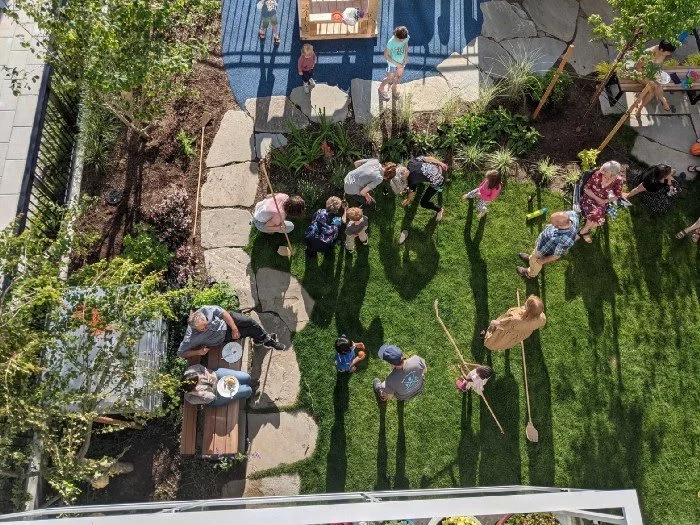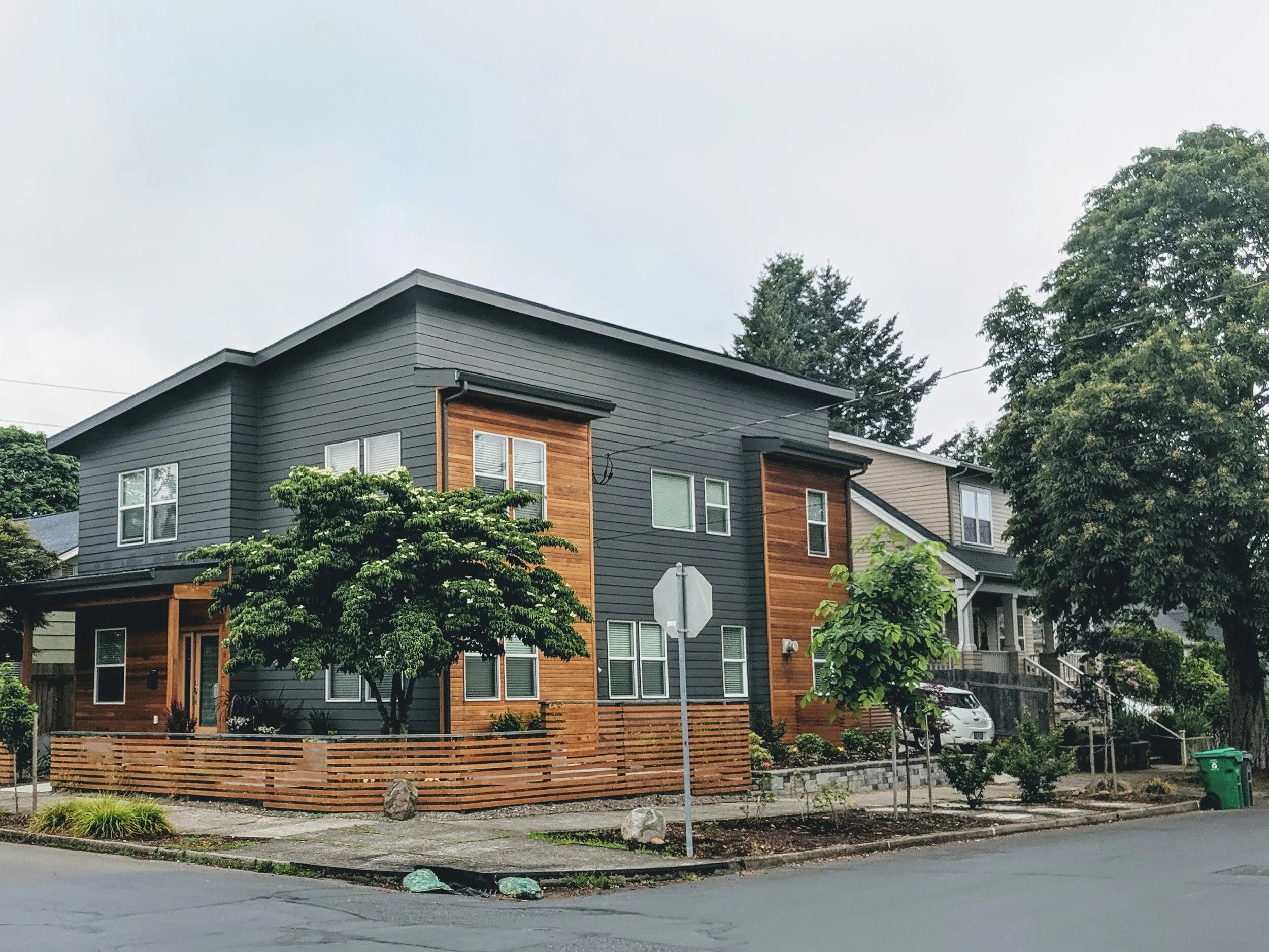Would ending zoning result in a Strong Town?
After a week off for our member drive (and another thank you to everyone who joined us last week), I’m back on the road this week, including two Strong America Tour stops in Louisiana (Lafayette and Shreveport) and a series of stops in the Dallas/Fort Worth area. We’re expecting big crowds so, if you’re in the area, come early and introduce yourself. I hope you can make it.
Recently, I received a great question on complex adaptive systems that tied in with the podcast conversation I recently had with Gracy Olmstead. I’ll try to paraphrase:
Chuck, you show all these photos of the great cities and neighborhoods we built prior to zoning regulations and other modern development regulations. If we just got rid of these regulations, would we start building start building places like that again?
This is, in essence, a libertarian argument similar to one I would have made a decade or more ago. Things are really messed up. A lot of what is messing it up is damage we are doing to ourselves through policies and interventions. Remove the policies and interventions and things will restore themselves. I get that argument and still believe it makes a lot of sense in many (perhaps most) instances.
Nassim Taleb makes this point in his discussions on negative knowledge. I included some of this in Chapter 9 of Strong Towns: A Bottom-Up Revolution to Rebuild American Prosperity.
Knowledge grows by subtraction much more than by addition—given that what we know today might turn out to be wrong but what we know to be wrong cannot turn out to be right, at least not easily.
Yet, there is something missing with this approach, something the question I was posed glosses over. When we’re dealing with complex, adaptive systems—something like a natural ecosystem, including human habitat—we must acknowledge that there are many different variations that can result from the same initial conditions.
The landscape where I live was once covered with Norway pine. It was logged during the 1800’s, including the land that would become the family farm I grew up on. Through my youth, that farm was a collection of fields separated by clumps of jack pine (“scrub pine” as the locals derisively call them because they grow like weeds and are correspondingly weaker wood). My parents stopped farming parts of it when I left for college. With no human intervention, the jack pine trees took over. Theoretically, if left untouched, the jack pine would eventually succeed to Norways again. But would they?
When the Norway pine originally grew, there were totally different animals living here, including moose, but not many deer. Today, the deer dominate due to climate factors, habitat loss, and their ability to tolerate humans. The grazing habits of deer and moose are different enough, though, where it’s questionable whether the Norways would ever have a chance to grow. There’s also the matter of climate, invasive insect species, soil conditions, and an untold number of other variables that will impact the next evolution of this habitat. Like all complex, adaptive systems, it’s unclear what will result when all the feedback loops interact with each other over time.
Another example—the one prompted by my conversation with Gracy—has to do with the social safety net. I am sympathetic to the assertions progressive giant Daniel Patrick Moynihan made in assessing the role of stable families in the upward mobility of disadvantaged populations. Specifically, Moynihan was writing in the wake of historic civil rights legislation, urging American policymakers to move beyond newly affirmed racial equality under the law towards something we today would call racial justice. His focus on the family structure as a critical foundation for stability and progress was controversial among his allies on the left then and perhaps even more so today.
I believe that, despite our best intentions, much of what we’ve done at the federal level in the name of assisting the poor has undermined the role of the family, something that has caused more destruction than any assistance we could provide. Whether I’m right or wrong on that—and I acknowledge there is no way to prove it one way or the other—what is very clear is that removing all these programs and interventions today would not bring about the prominence of family relationships, at least not in the foreseeable future.
In other words: we’re not going back. We’re a completely different culture today than we were when we launched the Great Society. If we just ended all federal assistance programs in the hopes that somehow nuclear families would magically be restored, it’s not clear what would happen, but I’d venture that we’d be more likely to be terrified than pleased by the results.
Complex, adaptive systems are not predictable. Give nearly the same starting conditions for two different complexity experiments, and over time they could wind up similar or utterly unrecognizable from each other. There is absolutely no reason to expect that, absent items we believe are causing distortions, that the original conditions we long for would evolve back into being. In many instances—like the two I’ve outlined here—there are many good reasons to believe they won’t.
This brings me back to the original question on zoning and other controls. The photos I show of the 1870’s popup shacks transforming incrementally over time into Main Street is the byproduct of a complex, adaptive system that included—as one layer of complexity—a cultural understanding of how to build places. As I write of the pop-up shacks in Chapter 2 of Strong Towns:
Each individual property owner, acting in their own self-interest, would do what is best for themselves. Yet, even in an infant phase of development, this highly-evolved human habitat would harmonize those selfish actions to the benefit of the other, nearby property owners.
If a property owner in this early phase of a town wanted to maximize their own position, they would build their building in line with the others on the street. They would have their entrance and windows facing the street. They would make the front of their building as ornate as resources and skill would allow. They would put the trash and latrine and other less-savory things in the rear of the building, away from potential patrons.
The people building here didn’t need to be told what to do; they would have understood this as the only way to build. There wasn’t another alternative, at least not one as advantageous, and so culturally they would follow accepted practice.
Brainerd, MN. Front Street. 1870
This is lost wisdom. Today we have a totally different cultural understanding of how to build. Take away zoning and other land use controls today and what would happen? Would people start building incremental neighborhoods, delightful Main Streets, and Olmsted-inspired parks? Of course not. They would build in the way they understand, the way we as a culture understand that things are built.
They would put a big sign in front of a big parking lot along the highest traffic corridor they could. They would set their building back from the street, providing the minimum amount of ornamentation necessary to look acceptable as viewed at 30+ mph. They would construct their building out of cheap, disposable materials to match with the amortization period of the financing.
Like the reclaimed farm field and the impoverished single mother, instantly resetting things back to a prior condition—even one we wish we could get back to—will not magically restore what has been lost. There is no going back.
As I’ve said many times: The Suburban Experiment is the largest social, political, and economic reshaping of a society ever attempted. In the blink of an evolutionary eye, we changed everything about our habitat, throwing out thousands of years of spooky wisdom in favor of new theories of prosperity. We did this eagerly, confident of the results, throwing away restraint after restraint until we transformed a continent in ways unrecognizable to any prior human.
If you’re nostalgic for the past, give it up. We’re not going back. We must start with what has been given us and figure out what to do with it. The plan I lay out in my book is one way to do that. I don’t start with an idealized version of the past and lay out my steps for restoring it. The Strong Towns approach is a method to figure out what is going to work today.
So, sure, throw out your zoning code. Most modern zoning should be repealed and, if that were done, we would all be better off. Just don’t pretend that will get you the result you want, that somehow humans will go back to work building their ancient habitat as if we were some species released back into the wild.
We’re going to need codes and regulations, at least in the transition. I’ve got some ideas of what those should look like—focus on adaptability, lowering the bar to entry, and designing for humans instead of automobiles—but we’re going to have to figure that out. If that sounds like a worthy way to spend your time, you should consider joining the Strong Towns Network by getting into a local conversation, taking part in a discussion in our Facebook group, or joining with others in dialogue on our community page.
Important Announcement
Our Southern California Regional Gathering is coming up soon (just 16 days!) and space is limited. If you live in or near Southern California, you won’t want to miss this event. We’ve got some incredible speakers and topics lined up for you. Check out the full itinerary here, then make sure to register to secure your seat. Thanks to the generous sponsorship of Fieldstead and Company, tickets are now 75% off. Just use the code BLACKFRIDAY at checkout.
See you in Santa Ana!












Americans need housing relief imminently. Despite what you may have heard, upzoning isn’t likely to be the thing that delivers that—but here's why it’s still worth pursuing.